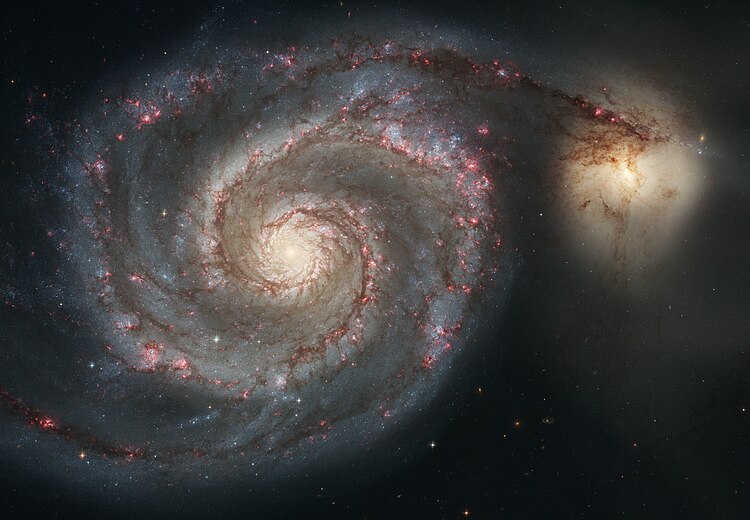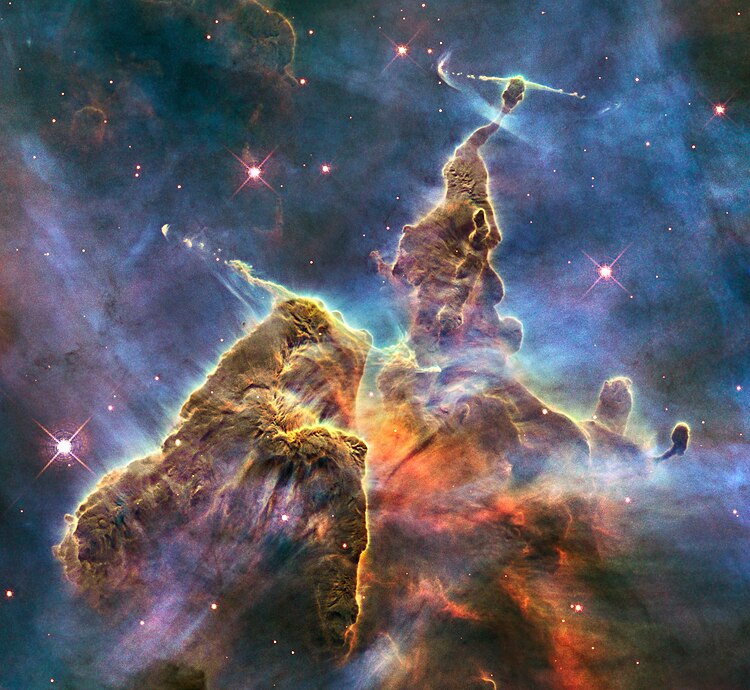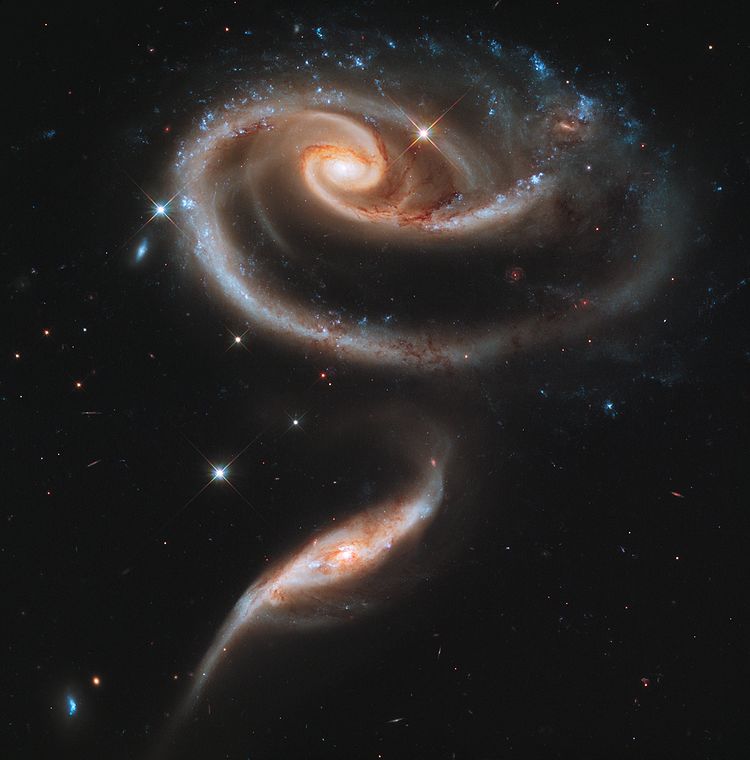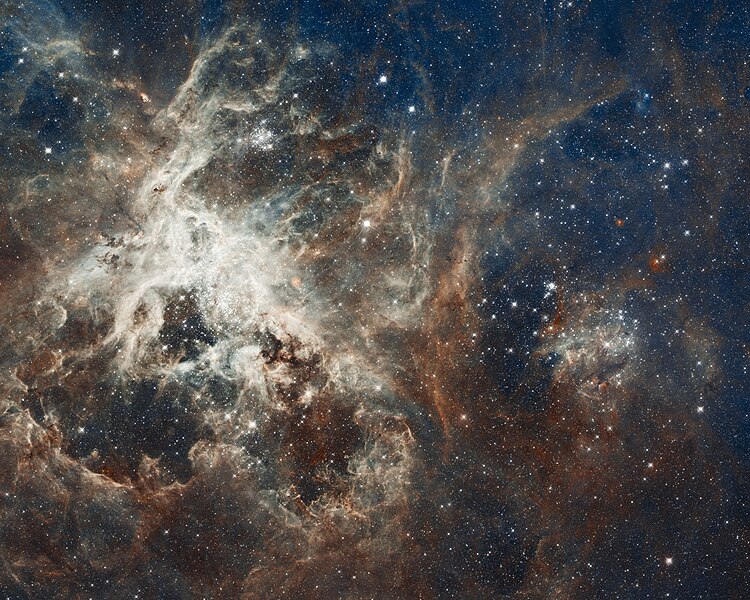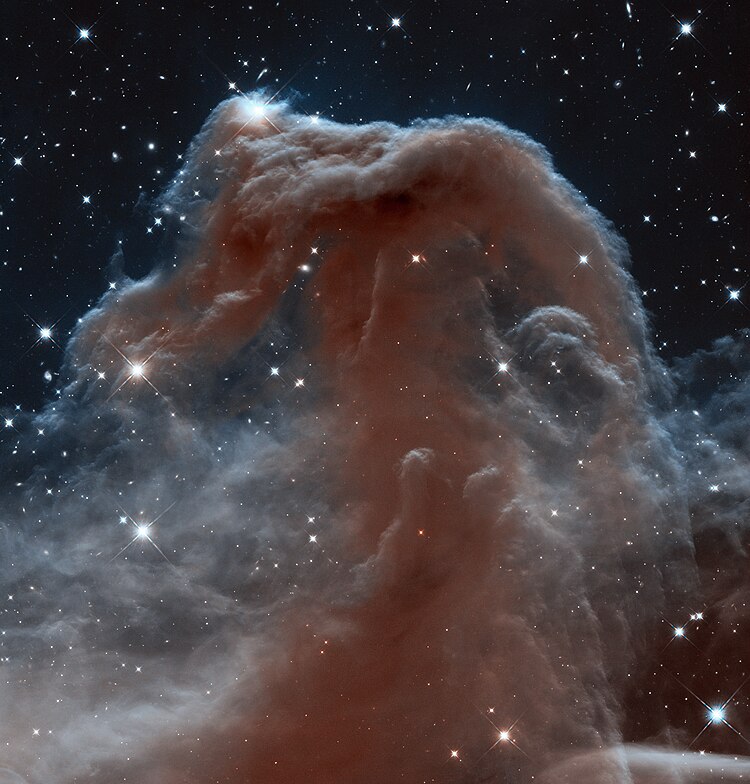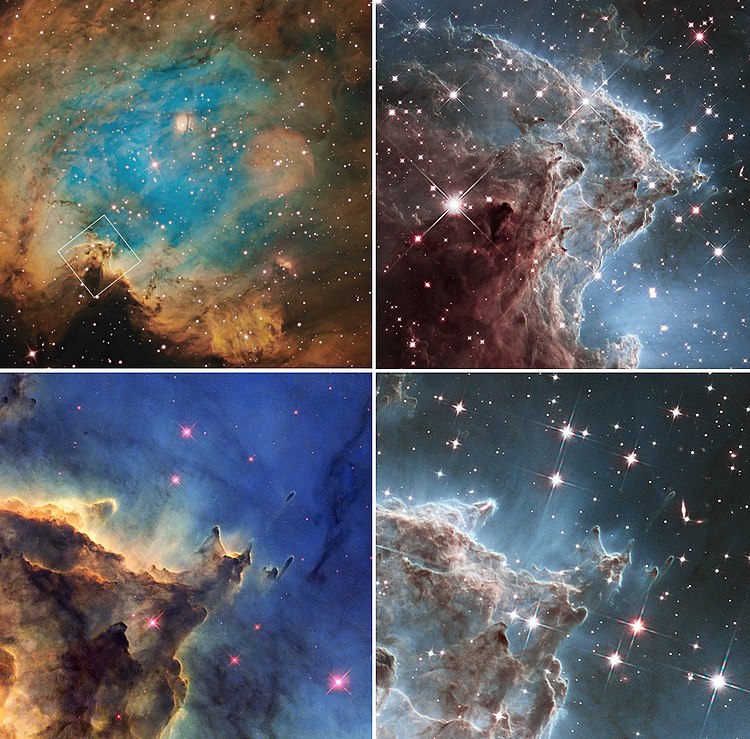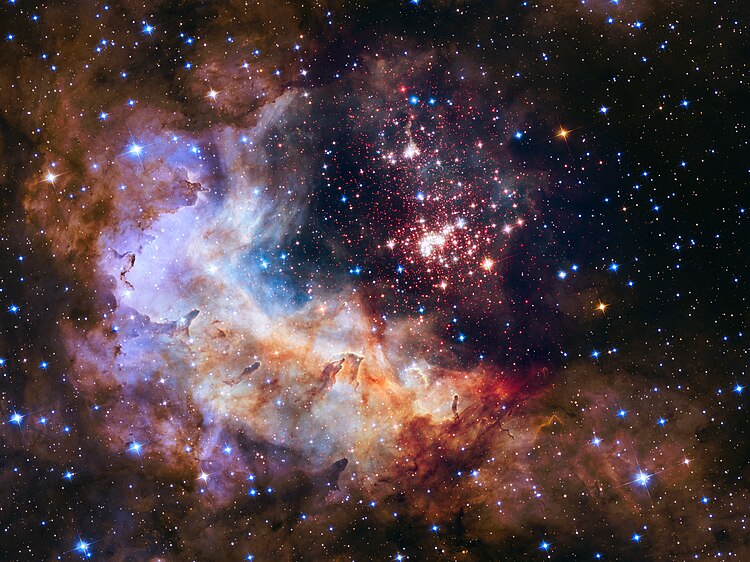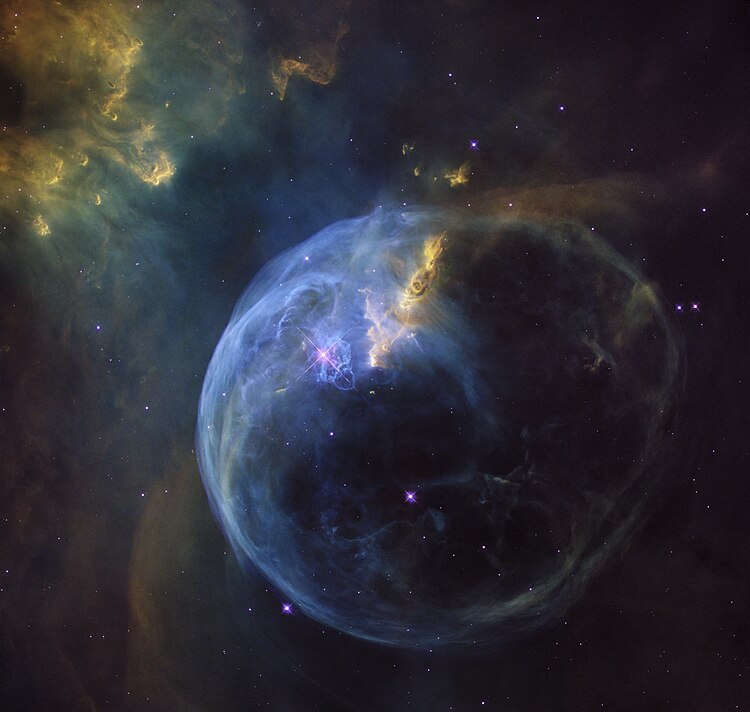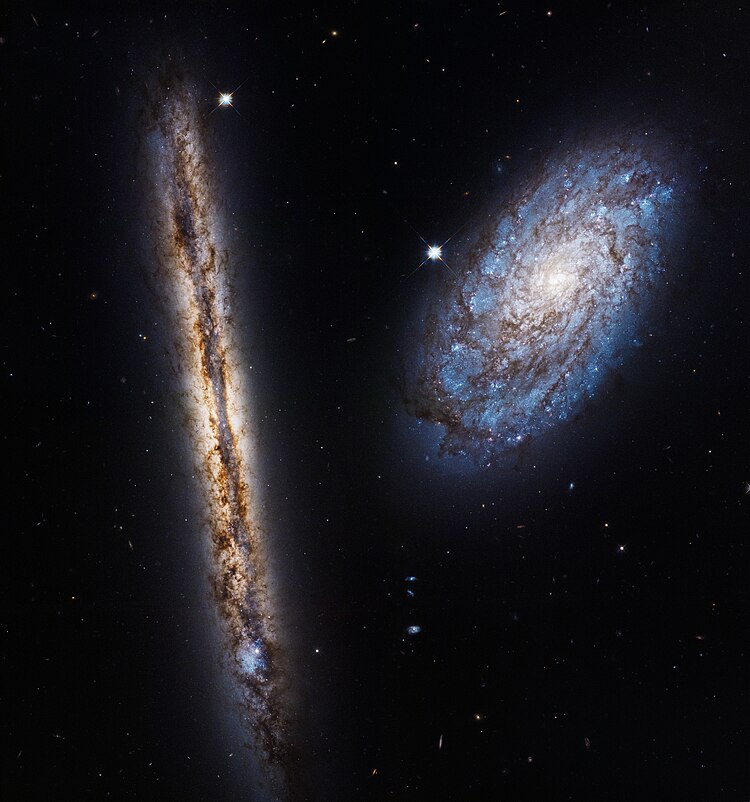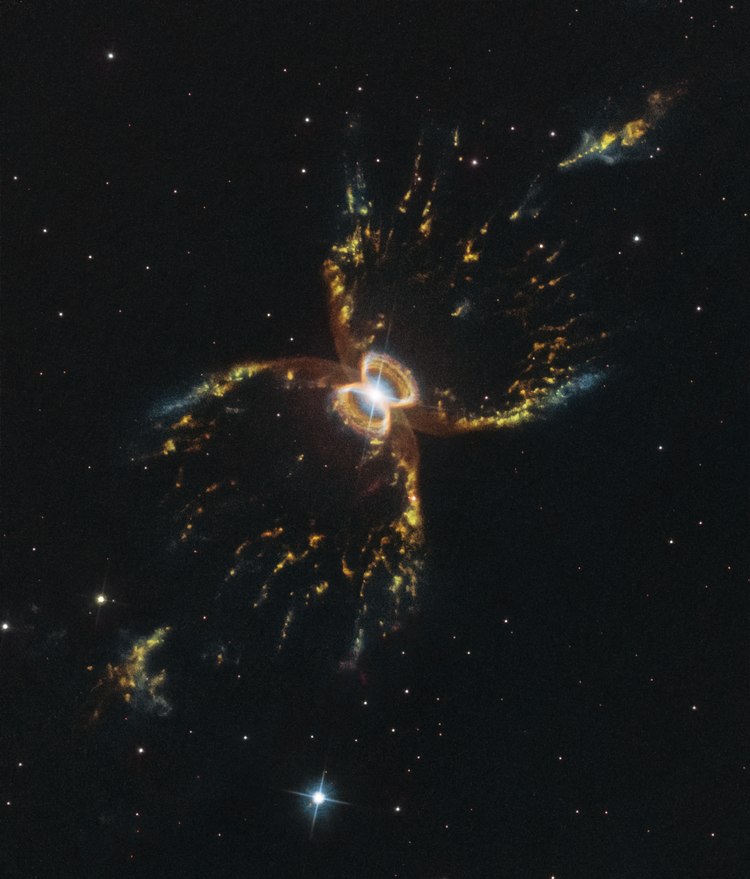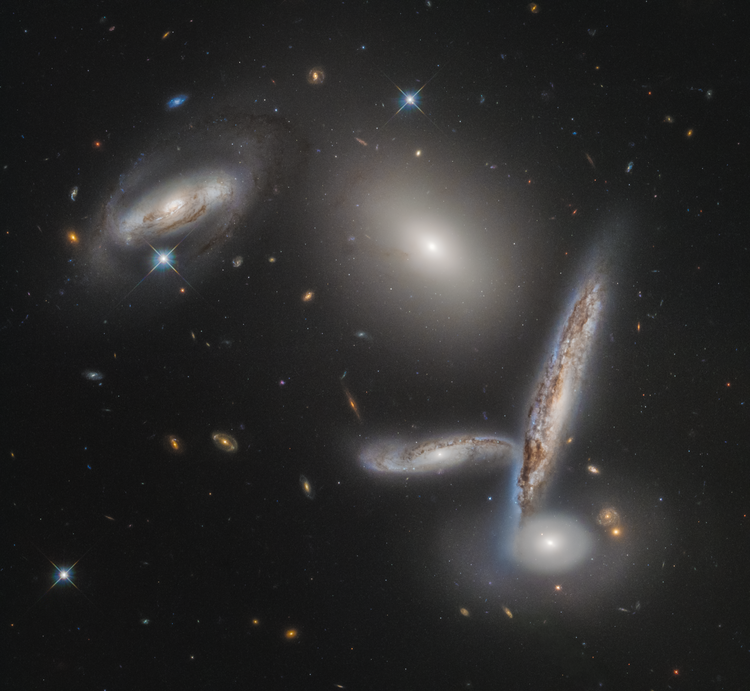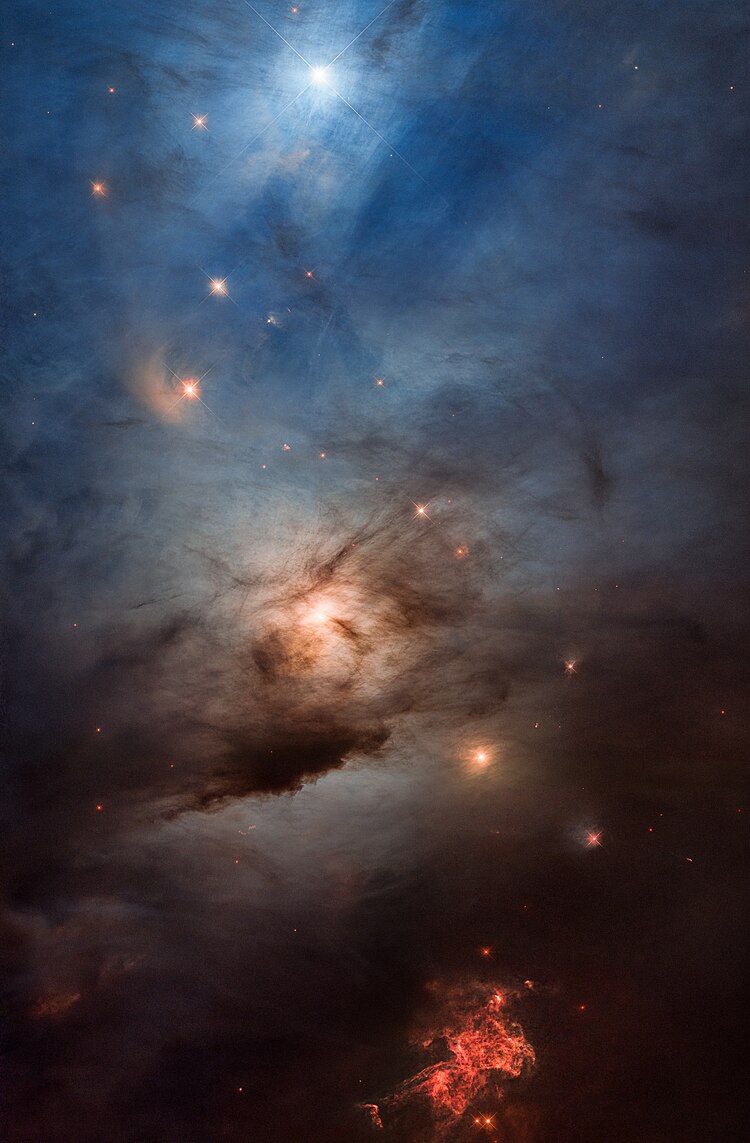
The Hubble Space Telescope is a space telescope that was launched into low Earth orbit in 1990 and remains in operation. It was not the first space telescope, but it is one of the largest and most versatile, renowned both as a vital research tool and as a public relations boon for astronomy. The Hubble telescope is named after astronomer Edwin Hubble and is one of NASA's Great Observatories. The Space Telescope Science Institute (STScI) selects Hubble's targets and processes the resulting data, while the Goddard Space Flight Center (GSFC) controls the spacecraft.

A galaxy cluster, or a cluster of galaxies, is a structure that consists of anywhere from hundreds to thousands of galaxies that are bound together by gravity, with typical masses ranging from 1014 to 1015 solar masses. They are the second-largest known gravitationally bound structures in the universe after some superclusters (of which only one is known to be bound). They were believed to be the largest known structures in the universe until the 1980s, when superclusters were discovered. One of the key features of clusters is the intracluster medium (ICM). The ICM consists of heated gas between the galaxies and has a peak temperature between 2–15 keV that is dependent on the total mass of the cluster. Galaxy clusters should not be confused with galactic clusters (also known as open clusters), which are star clusters within galaxies, or with globular clusters, which typically orbit galaxies. Small aggregates of galaxies are referred to as galaxy groups rather than clusters of galaxies. The galaxy groups and clusters can themselves cluster together to form superclusters.

The Space Telescope Imaging Spectrograph (STIS) is a spectrograph, also with a camera mode, installed on the Hubble Space Telescope. Aerospace engineer Bruce Woodgate of the Goddard Space Flight Center was the principal investigator and creator of the STIS. It operated continuously from 1997 until a power supply failure in August 2004. After repairs, it began operating again in 2009. The spectrograph has made many important observations, including the first spectrum of the atmosphere of an extrasolar planet, HD 209458b.

The Wide Field and Planetary Camera 2 (WFPC2) is a camera formerly installed on the Hubble Space Telescope. The camera was built by the Jet Propulsion Laboratory and is roughly the size of a baby grand piano. It was installed by servicing mission 1 (STS-61) in 1993, replacing the telescope's original Wide Field and Planetary Camera (WF/PC). WFPC2 was used to image the Hubble Deep Field in 1995, the Engraved Hourglass Nebula and Egg Nebula in 1996, and the Hubble Deep Field South in 1998. During STS-125, WFPC2 was removed and replaced with the Wide Field Camera 3 as part of the mission's first spacewalk on May 14, 2009. After returning to Earth, the camera was displayed briefly at the National Air and Space Museum and the Jet Propulsion Laboratory before returning to its final home at the Smithsonian's National Air and Space Museum.

The Veil Nebula is a cloud of heated and ionized gas and dust in the constellation Cygnus.
The Hubble Heritage Project was founded in 1998 by Keith Noll, Howard Bond, Forrest Hamilton, Anne Kinney, and Zoltan Levay at the Space Telescope Science Institute. Until its end in 2016, the Hubble Heritage Project released, on an almost monthly basis, pictures of celestial objects like planets, stars, galaxies and galaxy clusters.
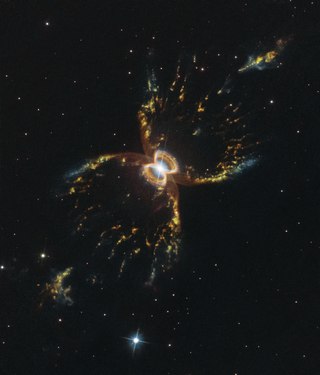
The Southern Crab Nebula is a nebula in the constellation Centaurus. The nebula is several thousand light years from Earth, and its central star is a symbiotic Mira variable - white dwarf pair. It is named for its resemblance to the Crab Nebula, which is in the northern sky.

NGC 2363 is a star-forming region in the Magellanic galaxy NGC 2366 which is located in the constellation Camelopardalis. It contains NGC 2363-V1, a luminous blue variable star which is 6,300,000 times more luminous than the Sun and one of the most luminous stars known. It can be seen in this Hubble Space Telescope image as the bright isolated star in the dark void on the left of the nebula.
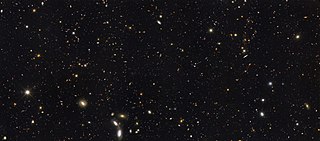
The Great Observatories Origins Deep Survey, or GOODS, is an astronomical survey combining deep observations from three of NASA's Great Observatories: the Hubble Space Telescope, the Spitzer Space Telescope, and the Chandra X-ray Observatory, along with data from other space-based telescopes, such as XMM Newton, and some of the world's most powerful ground-based telescopes.

Mayall's Object is the result of two colliding galaxies located 500 million light years away within the constellation of Ursa Major. It was discovered by American astronomer Nicholas U. Mayall of the Lick Observatory on 13 March 1940, using the Crossley reflector. When first discovered, Mayall's Object was described as a peculiar nebula, shaped like a question mark. Originally theorized to represent a galaxy reacting with the intergalactic medium, it is now thought to represent the collision of two galaxies, resulting in a new object consisting of a ring-shaped galaxy with a tail emerging from it. It is thought that the collision between the two galaxies created a shockwave that initially drew matter into the center which then formed the ring.
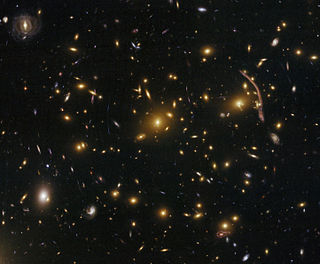
Abell 370 is a galaxy cluster located nearly 5 billion light-years away from the Earth, in the constellation Cetus. Its core is made up of several hundred galaxies. It was catalogued by George Abell, and is the most distant of the clusters he catalogued.

Arp 273 is a pair of local universe interacting galaxies located 300 million light years away from earth in the constellation Andromeda. It was first described in the Atlas of Peculiar Galaxies, compiled by Halton Arp in 1966.

Abell 2744, nicknamed Pandora's Cluster, is a giant galaxy cluster resulting from the simultaneous pile-up of at least four separate, smaller galaxy clusters that took place over a span of 350 million years, and is located approximately 4 billion light years from Earth. The galaxies in the cluster make up less than five percent of its mass. The gas is so hot that it shines only in X-rays. Dark matter makes up around 75 percent of the cluster's mass.

Mystic Mountain is a photograph and a term for a region in the Carina Nebula imaged by the Hubble Space Telescope. The view was captured by the then-new Wide Field Camera 3, though the region was also viewed by the previous generation instrument. The new view celebrated the telescope's 20th anniversary of being in space in 2010. Mystic Mountain contains multiple Herbig–Haro objects where nascent stars are firing off jets of gas which interact with surrounding clouds of gas and dust. This region is about 7,500 light-years away from Earth. The pillar measures around three light-years in height. The name was influenced by the works of H. P. Lovecraft.

Fine Guidance Sensor (FGS) for the Hubble Space Telescope is a system of three instruments used for pointing the telescope in space, and also for astrometry and its related sciences. To enable aiming the telescope at a specific spot in the sky, each FGS combines optics and electronics. There are three Hubble FGS, and they have been upgraded over the lifetime of the telescope by crewed Space Shuttle missions. The instruments can support pointing of 2 milli-arc seconds. The three FGS are part of the Hubble Space Telescope's Pointing Control System, aka PCS. The FGS function in combination with the Hubble main computer and gyroscopes, with the FGS providing data to the computer as sensors which enables the HST to track astronomical targets.

PGC 44691 is a spiral galaxy located about 350 million light-years away in the constellation Coma Berenices. It belongs to a galaxy cluster known as the Coma Cluster. In 1994, the Hubble Space Telescope observed PGC 44691 and the nearby elliptical galaxy NGC 4881 to infer the distance to the Coma Cluster.
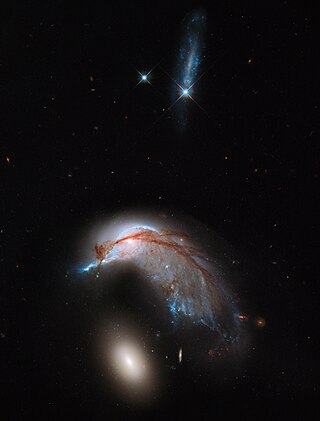
NGC 2936 is an interacting spiral galaxy located at a distance of 326 million light years, in the constellation Hydra. NGC 2936 is interacting with elliptical galaxy NGC 2937, located just beneath it. They were both discovered by Albert Marth on Mar 3, 1864. To some astronomers, the galaxy looks like a penguin or a porpoise. NGC 2936, NGC 2937, and PGC 1237172 are included in the Atlas of Peculiar Galaxies as Arp 142 in the category "Galaxy triplet".

The Hubble Legacy Field is an image of a small region of space in the constellation Fornax, containing an estimated 265,000 galaxies. The original release was composed of Hubble Space Telescope data accumulated over a 16-year period. Looking back approximately 13 billion years it has been used to search for galaxies that existed at that time. The image was taken in a section of the sky with a low density of bright stars in the near-field, allowing much better viewing of dimmer, more distant objects. It builds on the data collected for the Hubble Ultra-Deep Field, the Hubble eXtreme Deep Field and the Great Observatories Origins Deep Survey.
Touch the Invisible Sky is a 60-page tactile astronomy book written by astronomy educator Noreen Grice, and astronomers Simon Steel and Doris Daou, and was published in 2007 by Ozone publishing. The book contains colour images alongside Braille and large print descriptions of celestial objects, and colour photographs from the Hubble Space Telescope, Chandra X-Ray Observatory, and Spitzer Space Telescope, amongst others, which are over-laid with TechnoBraille, allowing visually impaired readers to feel the images. The images featured include nebulae, stars, galaxies and some of the telescopes used to photograph the celestial objects. The images span a range of wavelengths on the electromagnetic spectrum, with a variety of textures and shapes used to convey the characteristics of the objects. The objects featured include our own Sun, the star Eta Carinae, The Crab Nebula, and Kepler's Supernova.
